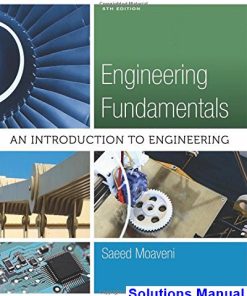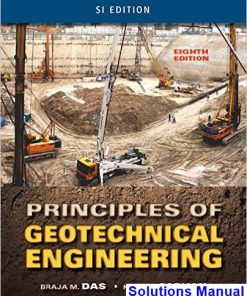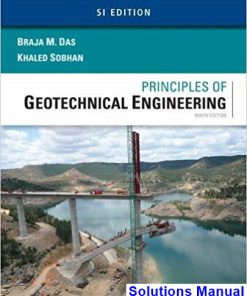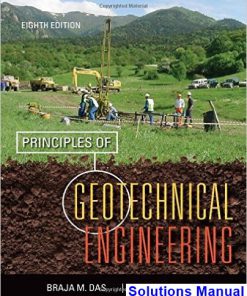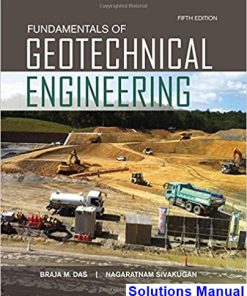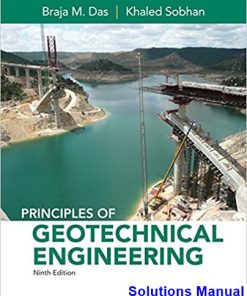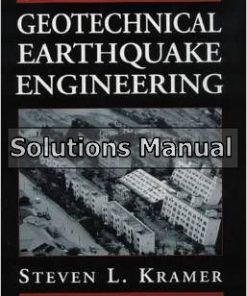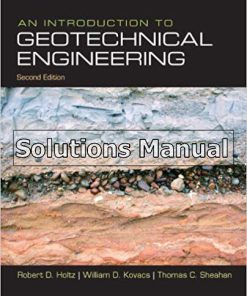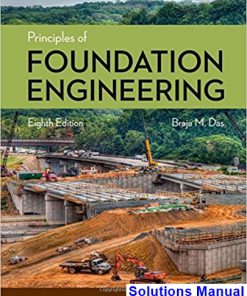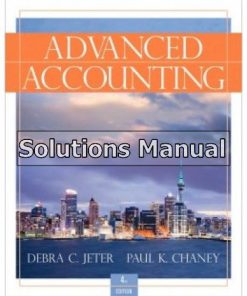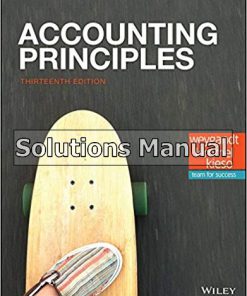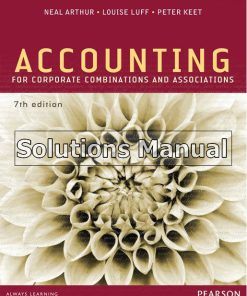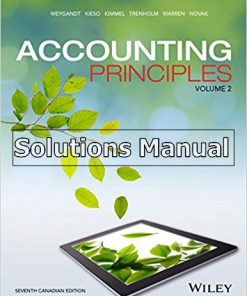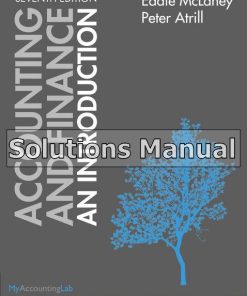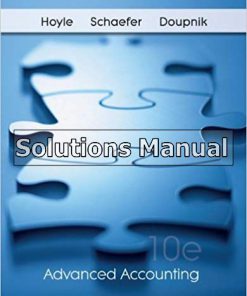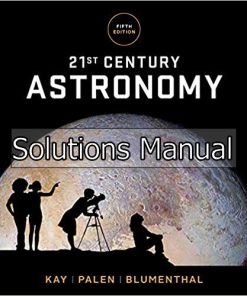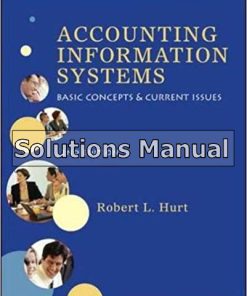Introduction to Geotechnical Engineering 2nd Edition Das Solutions Manual
$50.00 Original price was: $50.00.$26.50Current price is: $26.50.
Introduction to Geotechnical Engineering 2nd Edition Das Solutions Manual.
This is completed downloadable of Introduction to Geotechnical Engineering 2nd Edition Das Solutions Manual
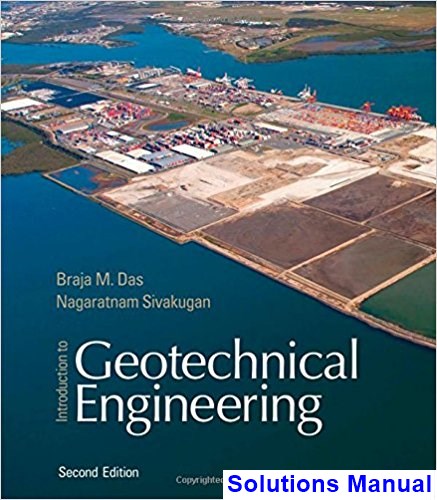
Product Details:
- ISBN-10 : 1305257324
- ISBN-13 : 978-1305257320
- Author: Braja Das, Sivakugan
Written in a concise, easy-to understand manner, INTRODUCTION TO GEOTECHNICAL ENGINEERING, 2e, presents intensive research and observation in the field and lab that have improved the science of foundation design. Now providing both U.S. and SI units, this non-calculus-based book is designed for courses in civil engineering technology programs where soil mechanics and foundation engineering are combined into one course. It is also a useful reference tool for civil engineering practitioners.
Table of Content:
- Ch 1: Geotechnical Engineering
- 1.1 Geotechnical Engineering
- 1.2 Geotechnical Engineering Applications
- 1.3 Soil Parameters
- References
- Ch 2: Grain-Size Analysis
- 2.1 Introduction
- 2.2 Soil-Grain Size
- 2.3 General Soil Deposits
- 2.4 Some Local Terms for Soils
- 2.5 Grain-Size Analysis
- 2.6 Grain-Size Distribution Curve
- 2.7 Summary
- Problems
- References
- Ch 3: Weight-Volume Relationships
- 3.1 Introduction
- 3.2 Volume Relationships
- 3.3 Weight Relationships
- 3.4 Specific Gravity of Soil Solids
- 3.5 Relationships among Unit Weight, Void Ratio, Moisture Content, and Specific Gravity
- 3.6 Relationships among Unit Weight, Porosity, and Moisture Content
- 3.7 Relative Density
- 3.8 Summary
- Problems
- References
- Ch 4: Plasticity and Soil Classification
- 4.1 Introduction
- 4.2 Consistency of Soil-Atterberg Limits
- 4.3 Liquid Limit (LL)
- 4.4 Plastic Limit (PL)
- 4.5 Shrinkage Limit (SL)
- 4.6 Engineering Classification of Soil
- 4.7 AASHTO Classification System
- 4.8 Unified Soil Classification System
- 4.9 Summary
- Problems
- References
- Ch 5: Soil Compaction
- 5.1 Introduction
- 5.2 Compaction-General Principles
- 5.3 Standard Proctor Test
- 5.4 Factors Affecting Compaction
- 5.5 Modified Proctor Test
- 5.6 Effect of Compaction on Cohesive Soil Properties
- 5.7 Field Compaction
- 5.8 Specifications for Field Compaction
- 5.9 Determination of Field Unit Weight of Compaction
- 5.10 Summary
- Problems
- References
- Ch 6: Permeability and Capillarity
- 6.1 Introduction
- 6.2 Darcy’s Law
- 6.3 Hydraulic Conductivity
- 6.4 Laboratory Determination of Hydraulic Conductivity
- 6.5 Relationships for Hydraulic Conductivity-Granular Soil
- 6.6 Relationships for Hydraulic Conductivity-Cohesive Soils
- 6.7 Permeability Test in the Field by Pumping from Wells
- 6.8 Capillary Rise in Soils
- 6.9 Summary
- Problems
- References
- Ch 7: Stresses in a Soil Mass
- 7.1 Introduction
- 7.2 Stresses in Saturated Soil without Seepage
- 7.3 Stresses in Saturated Soil with Upward Seepage
- 7.4 Stress Caused by a Point Load
- 7.5 Vertical Stress below the Center of a Uniformly Loaded Circular Area
- 7.6 Vertical Stress Caused by a Uniform Rectangular Load
- 7.7 Summary
- Problems
- References
- Ch 8: Consolidation
- 8.1 Introduction
- 8.2 Fundamentals of Consolidation
- 8.3 One-Dimensional Laboratory Consolidation Test
- 8.4 Void Ratio-Pressure Plots
- 8.5 Normally Consolidated and Overconsolidated Clays
- 8.6 Effect of Disturbance on Void Ratio-Pressure Relationship
- 8.7 Calculation of Settlement from One-Dimensional Primary Consolidation
- 8.8 Compression Index (Cc) and Swell Index (Cs)
- 8.9 Settlement from Secondary Consolidation
- 8.10 Time Rate of Consolidation
- 8.11 Coefficient of Consolidation
- 8.12 Summary
- Problems
- References
- Ch 9: Shear Strength of Soil
- 9.1 Introduction
- 9.2 Mohr-Coulomb Failure Criterion
- 9.3 Direct Shear Test
- 9.4 Triaxial Shear Test
- 9.5 Consolidated-Drained Test
- 9.6 Consolidated-Undrained Test
- 9.7 Unconsolidated-Undrained Test
- 9.8 Unconfined Compression Test on Saturated Clay
- 9.9 Summary
- Problems
- References
- Ch 10: Subsurface Exploration
- 10.1 Introduction
- 10.2 Subsurface Exploration Program
- 10.3 Exploratory Borings in the Field
- 10.4 Procedures for Sampling Soil
- 10.5 Observation of Water Levels
- 10.6 Vane Shear Test
- 10.7 Cone Penetration Test
- 10.8 Coring of Rocks
- 10.9 Preparation of Boring Logs
- 10.10 Subsoil Exploration Report
- 10.11 Summary
- Problems
- References
- Ch 11: Lateral Earth Pressure: At-Rest, Rankine, and Coulomb
- 11.1 Introduction
- 11.2 At-Rest, Active, and Passive Pressures
- 11.3 Earth Pressure At-Rest
- 11.4 Earth Pressure At-Rest for Partially Submerged Soil
- 11.5 Rankine Active Earth Pressure
- 11.6 Rankine Active Pressure-Partially Submerged Cohesionless Soil (c’ = 0) with Backfill Supporting
- 11.7 Rankine Active Pressure with Inclined Granular (c’ = 0) Backfill
- 11.8 Rankine Passive Earth Pressure
- 11.9 Coulomb’s Active Pressure
- 11.10 Coulomb’s Passive Pressure
- 11.11 Summary
- Problems
- References
- Ch 12: Shallow Foundations-Bearing Capacity and Settlement
- 12.1 Introduction
- 12.2 General Concepts
- 12.3 Ultimate Bearing Capacity Theory
- 12.4 Modification of Bearing Capacity Equations for Water Table
- 12.5 The Factor of Safety
- 12.6 Eccentrically Loaded Foundations
- 12.7 Types of Foundation Settlement
- 12.8 Elastic Settlement
- 12.9 Range of Material Parameters for Computing Elastic Settlement
- 12.10 Plate Load Test
- 12.11 Elastic Settlement Based on Standard Penetration Resistance in Sand
- 12.12 Primary Consolidation Settlement
- 12.13 Common Types of Mat Foundations
- 12.14 Bearing Capacity of Mat Foundations
- 12.15 Compensated Foundations
- 12.16 Summary
- Problems
- References
- Ch 13: Deep Foundations
- 13.1 Introduction
- 13.2 Pile Foundations-General
- 13.3 Types of Piles and Their Structural Characteristics
- 13.4 Estimating Pile Length
- 13.5 Installation of Piles
- 13.6 Ultimate Load-Carrying Capacity of Piles in Sand
- 13.7 Ultimate Load-Carrying Capacity of Piles in Clay (o = 0 Condition)
- 13.8 Pile-Driving Formulas
- 13.9 Pile Load Tests
- 13.10 Group Piles-Efficiency
- 13.11 Consolidation Settlement of Group Piles
- 13.12 Elastic Settlement of Group Piles
- 13.13 Drilled Shafts-General
- 13.14 Types of Drilled Shafts
- 13.15 Construction Procedures
- 13.16 Estimation of Load-Bearing Capacity
- 13.17 Allowable Load-Bearing Capacity Based on Settlement
- 13.18 Summary
- Problems
- References
- Ch 14: Retaining Walls
- 14.1 Introduction
- 14.2 Proportioning Retaining Walls
- 14.3 Application of Lateral Earth Pressure Theories to Design
- 14.4 Stability of Retaining Walls
- 14.5 Check for Overturning
- 14.6 Check for Sliding along the Base
- 14.7 Check for Bearing Capacity Failure
- 14.8 Drainage from the Backfill of the Retaining Wall
- 14.9 Provision of Joints in Retaining-Wall Construction
- 14.10 Summary
- Problems
- Ch 15: Slope Stability
- 15.1 Introduction
- 15.2 Factor of Safety
- 15.3 Culmann’s Method for Stability Analysis
- 15.4 Factor of Safety along a Plane
- 15.5 Analysis of Slopes with Circular Failure Surfaces-General
- 15.6 Mass Procedures-Slopes in Homogeneous Clay Soil with o = 0
- 15.7 Mass Procedures-Slopes in Homogeneous c’ – o’ Soil
- 15.8 Ordinary Method of Slices
- 15.9 Summary
- Problems
- References
- Answers to Selected Problems
- Index
People Also Search:
introduction to geotechnical engineering das
introduction to geotechnical engineering 2nd edition das
introduction to geotechnical engineering
introduction to geotechnical engineering 2nd edition
introduction to geotechnical engineering 2nd edition download scribd
introduction to geotechnical engineering 2nd edition solution manual download pdf
Instant download after Payment is complete
You may also like…
Engineering
Engineering Fundamentals An Introduction to Engineering 5th Edition Saeed Moaveni Solutions Manual
Related products
Solutions Manual
Solutions Manual
Accounting Principles 13th Edition Weygandt Solutions Manual
Solutions Manual
Solutions Manual
Solutions Manual
Solutions Manual
Accounting Information Systems 2nd Edition Hurt Solutions Manual




